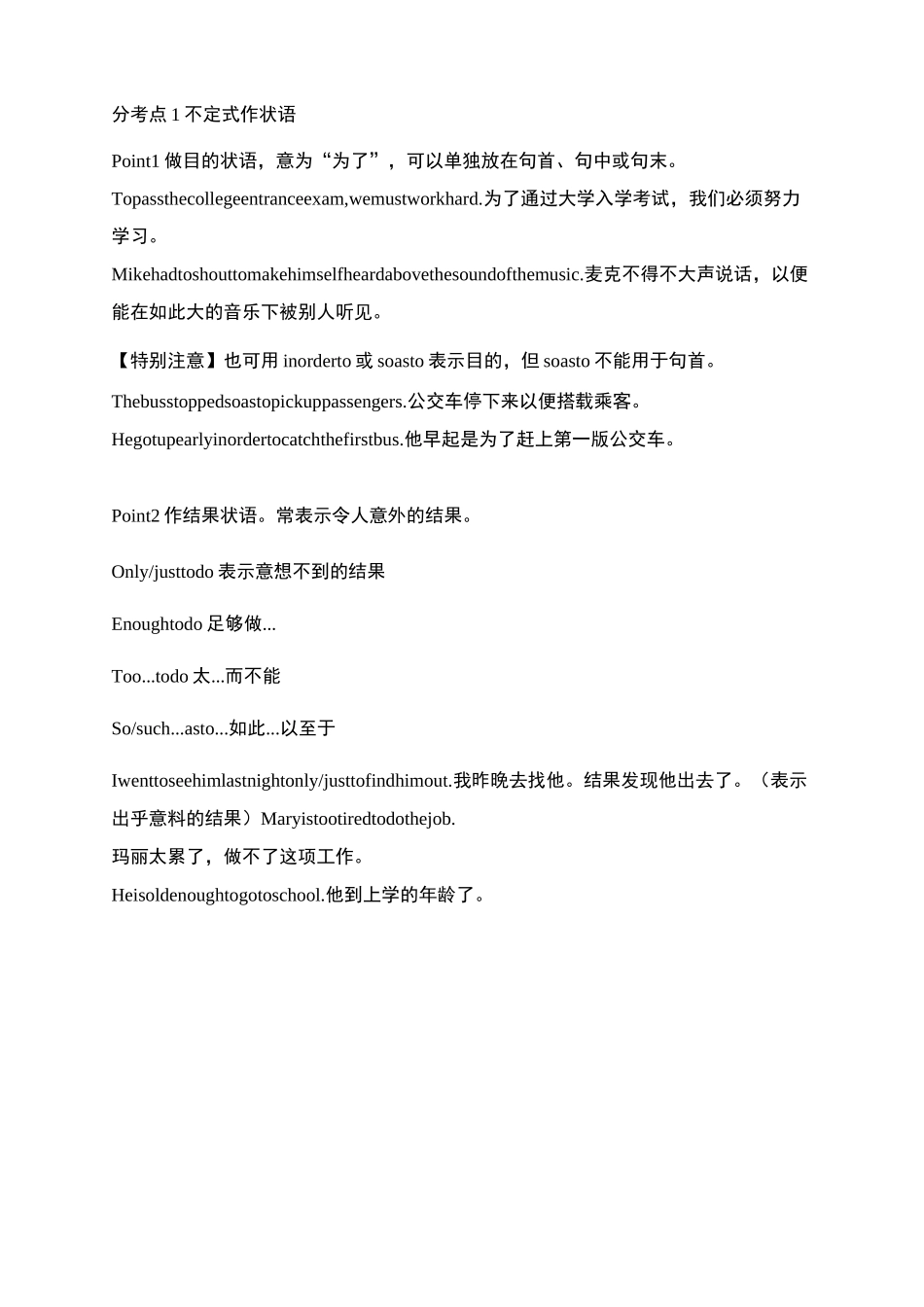Companynumber:【WTUT-WT88Y-W8BBGB-BWYTT-19998】分考点 1 不定式作状语Point1 做目的状语,意为“为了”,可以单独放在句首、句中或句末。Topassthecollegeentranceexam,wemustworkhard.为了通过大学入学考试,我们必须努力学习。Mikehadtoshouttomakehimselfheardabovethesoundofthemusic.麦克不得不大声说话,以便能在如此大的音乐下被别人听见。【特别注意】也可用 inorderto 或 soasto 表示目的,但 soasto 不能用于句首。Thebusstoppedsoastopickuppassengers.公交车停下来以便搭载乘客。Hegotupearlyinordertocatchthefirstbus.他早起是为了赶上第一版公交车。Point2 作结果状语。常表示令人意外的结果。Only/justtodo 表示意想不到的结果Enoughtodo 足够做...Too...todo 太...而不能So/such...asto...如此...以至于Iwenttoseehimlastnightonly/justtofindhimout.我昨晚去找他。结果发现他出去了。(表示出乎意料的结果)Maryistootiredtodothejob.玛丽太累了,做不了这项工作。Heisoldenoughtogotoschool.他到上学的年龄了。Point3 作原因状语。常用在表示情感或态度的 sorry,surprised,disappointed,excited,glad,happy 等形容词后,常用结构为"主语+系动词+形容词+todo"。Tomwasveryhappytoseehismother.汤姆看到她的妈妈很高兴。Iwassurprisedtofindhimhere.发现他在这里我很开心。【特别注意】easy,difficult,hard,cheap,expensive,fit,comfortable,heavy,good 等形容词表示主语的特征或性质,后面接不定式作状语时,不定式和句子主语之间存在被动关系,但常用主语形式表示被动意义。Englishiseasytolearn.英语学起来很容易。Thebookisveryhardtounderstand.这本书很难理解。分考点 2 分词作状语形式意义Doing主动,进行Havingdoing主动,完成Done被动,完成;用作形容词,表状态Beingdone被动,进仃,意为正在被做Havingbeendone被动,完成Point1 作时间状语,常用在 when,while,before,since,as 引导的原因状语从句中。Hewentthroughthepaperswhilehavingbreakfast(=whilehewashavingbreakfast).他边吃早饭边看报纸。Whencompleted(=whenitiscompleted),theroadwillbeopentothepublic.这条路在竣工后会正式通车。Point2 作原因状语,相当于 because,since,as 引导的原因状语从句。Notunderstandingthis,heaskedtheteacherabout.=Becausehedidn'tunderstandthis,heaskedtheteacheraboutit.因为不理解...


